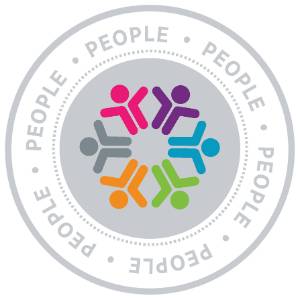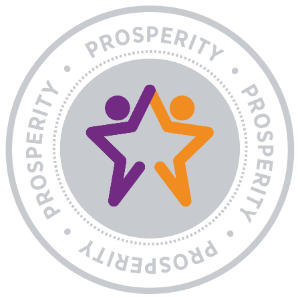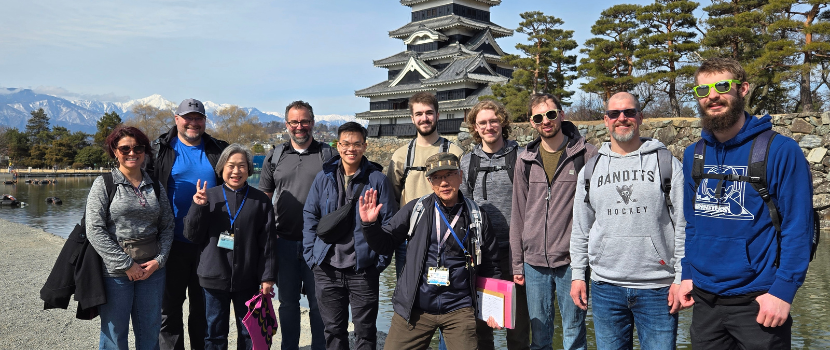
Seven students forged connections in Japan as the first participants of Saskatchewan Polytechnic’s newest study abroad experience. The trip brought together the Electronic Systems Engineering Technology program with a new partner, Nagano College, for two weeks of experiential learning that will be reciprocated at Saskatoon campus this coming fall.
The trip began in Tokyo with the two institutions signing a memorandum of understanding at the Canadian embassy. “We are excited that this will be an ongoing, mutually beneficial arrangement for inter-cultural learning and exchange,” says Kiela Caudillo Ruiz, study abroad coordinator with Sask Polytech’s International Partnerships and Projects.
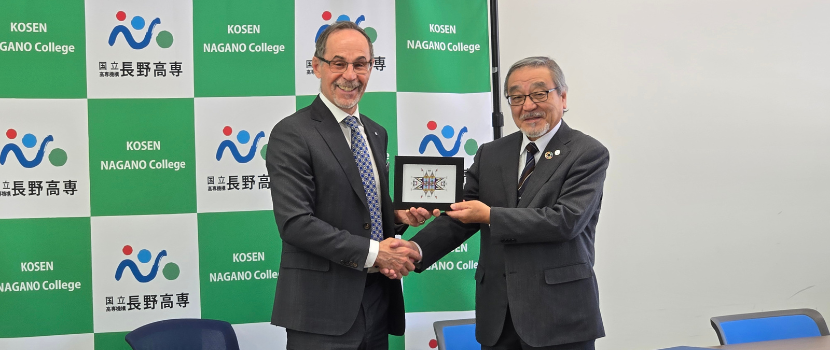
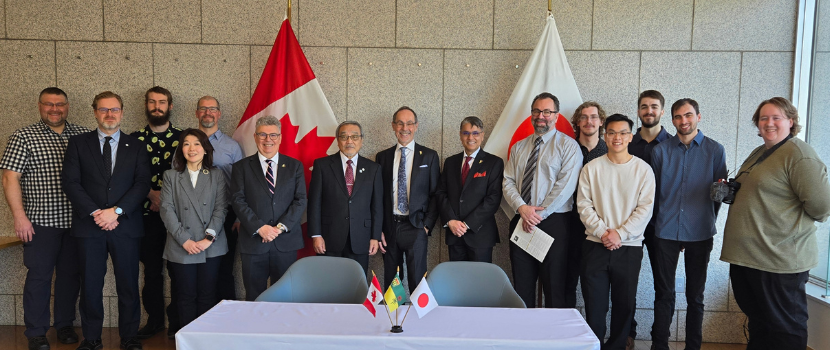
The group traveled inland to visit Nagano College, where they stayed in dorms and were fully immersed in Japanese campus life. “The college experience in Japan is culturally and structurally quite different from what our students experience in Canada,” says program head Christopher Roslinsky. “It was an experience to see our similarities and differences.”
Travis Kinsella, one of two first-year students in the program who got to attend, explains that college in Japan is intensive but leaves room for students to explore their interests through extracurricular clubs. “Some clubs, like the engineering ones, reinforce what they’re learning and help students find what they like doing,” he says.
Teegahn McFadden, who will graduate from the program this spring, enjoyed interacting with Japanese students while visiting the college. “It was good to be immersed with everybody and to get to know them a little better,” he says. “We got to explore some of their learning through robotics and car projects they’ve worked on, and we also played dodgeball, which was extremely fun. We just got tossed in with them and learned their version. It was awesome.”
Nagano college students begin their studies with two high school years, then follow with two technology focussed years. They can choose to finish with two university-level years. This six-year structure means students range from teenagers through adults and, accordingly, the institution has strict rules and curfews.
“We learned about several aspects of Japanese culture including discipline and community-minded corporate culture,” says Anthony Voykin, another program instructor. “Japanese employees, like students, work and study hard. At one company, employees are expected to spend 10-20 per cent of their day learning from others in different areas during unstructured time. They also work very long hours.
“To compensate employees, workplaces often provide high quality meals in excellent onsite cafeterias. Their work culture encourages meetings over lunch so these are bright and appealing spaces,” he says.
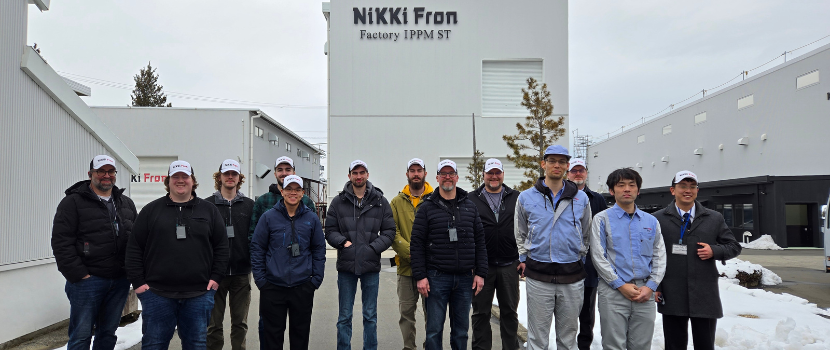
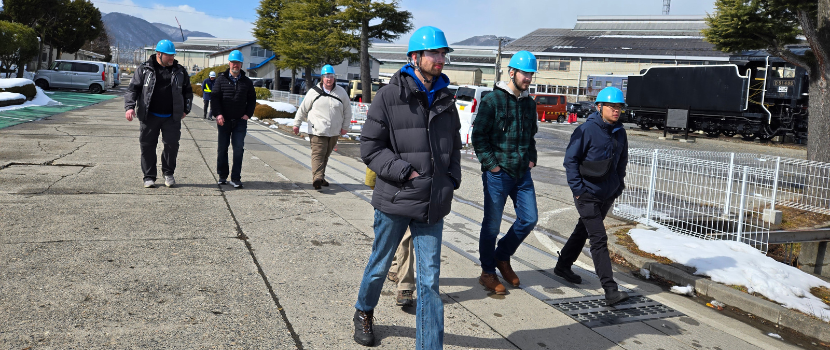
The group had a chance to visit a variety of sites, including a civil engineering firm, an engineering test site and the maintenance yard of train station where electronics for the trains are fixed.
A favourite site visit for both instructors and students was a local miso factory, where there was lots of automation in action. “We got to see the different stages of production—the measuring and dispensing of ingredients, conveyor belts, sensors and timing,” says Kinsella. “It was cool to see how everything interacted as a system.”
The cleanliness and orderliness of Japan’s factories was something McFadden says he will take away from the experience. The group left with samples of miso paste, commonly used to make a popular Japanese soup.
Cultural experiences, as well as program-specific takeaways, were a big part of the study abroad experience for both students and instructors. They enjoyed eating Japanese cuisine and also had a chance to make a dessert called “mochi” and participate in tea ceremonies.
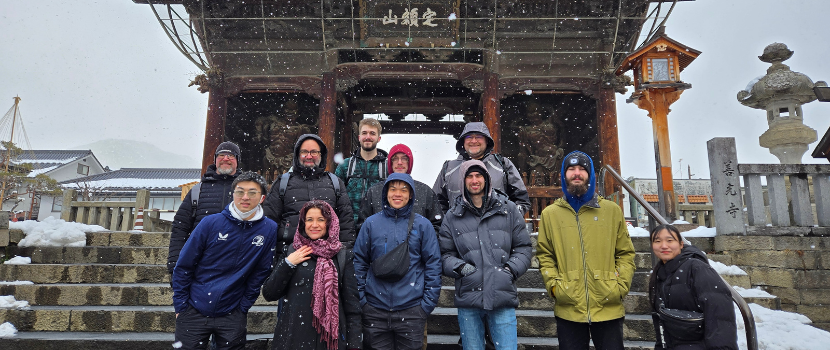
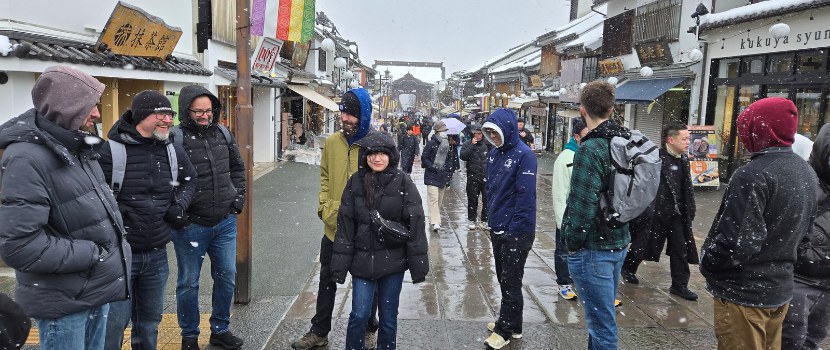
“Seeing temples and shrines, the tranquility among all the chaos, was a highlight for me,” says Kinsella. “One of the things I learned is to be mindful of your actions. Don’t just do thigs out of habit. Think about what you’re doing and check in on subconscious routines.
“Being in Japan helped with that personal lesson. I noticed during one of the tea ceremonies that Japanese people have fewer wasted actions and time.”
“This trip was a great opportunity for our students,” says Voykin. “Some hadn’t travelled outside Saskatchewan before. They gained confidence making decisions on their own during free time, figuring out local transit and getting creative to solve language barriers.
“I can already see it translate back to the classroom, which is amazing. The experiences and stories they brought home will give them confidence to talk to new people when applying for jobs in future.”
Both Kinsella and McFadden say having the trip planned for them made it appealing, especially during their studies. Program faculty and the Projects and Partnerships team will help plan a similar experiential learning tour for a group of Nagano students and their chaperones when they visit Saskatoon campus in Fall 2025.
“Thank you to the National Institute of Technology (KOSEN), Nagano College, for kicking off this exciting partnership,” says Dr. Larry Rosia, Sask Polytech President and CEO. “Our students gained so much insight from their visit. We are looking forward to hosting your students this fall in Saskatoon.”
Learn more about study abroad at Sask Polytech.
Saskatchewan Polytechnic is signatory to the SDG Accord. Sustainable Development Goal alignment is one of the ways Sask Polytech is leading the rise of polytechnic education.
